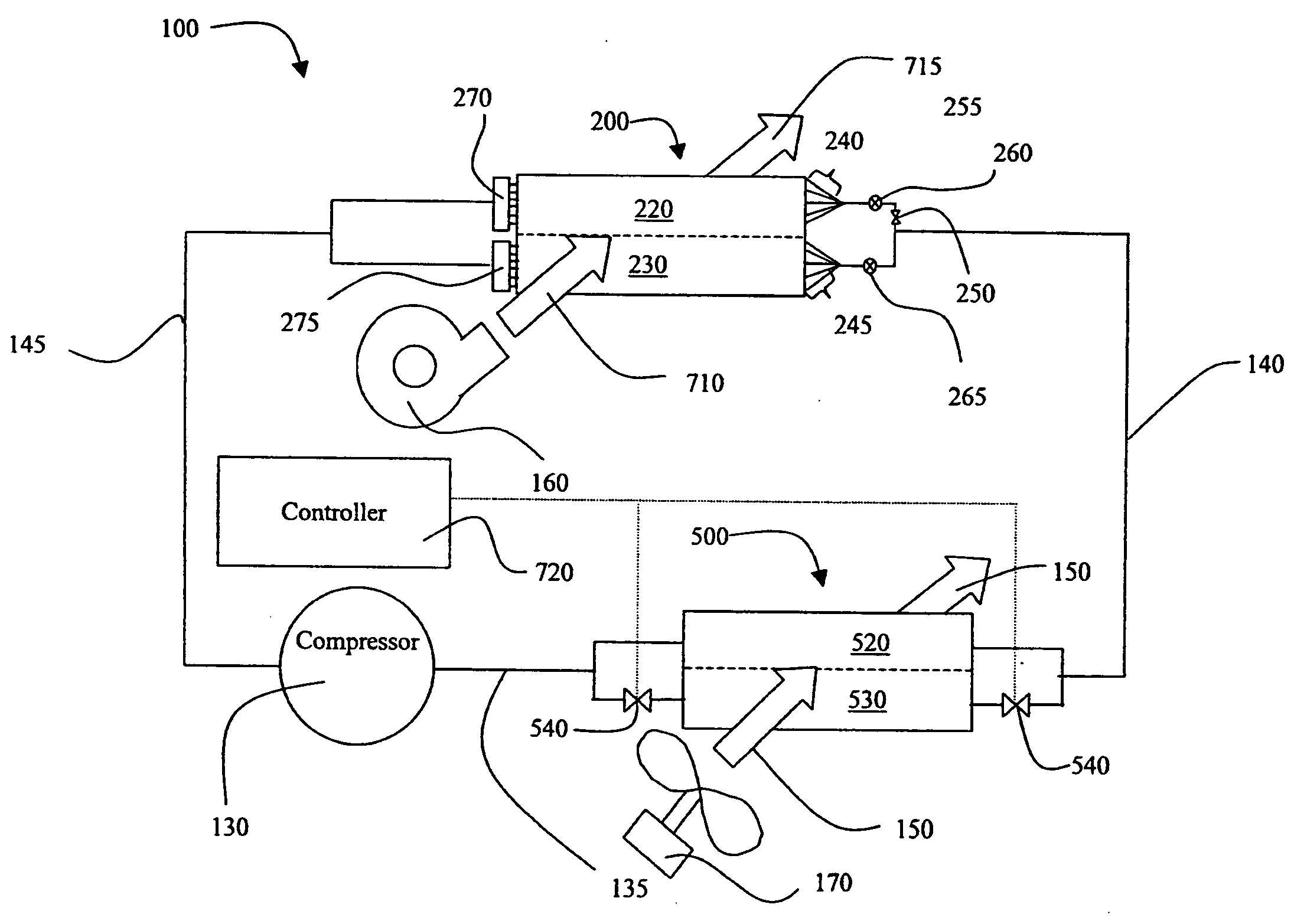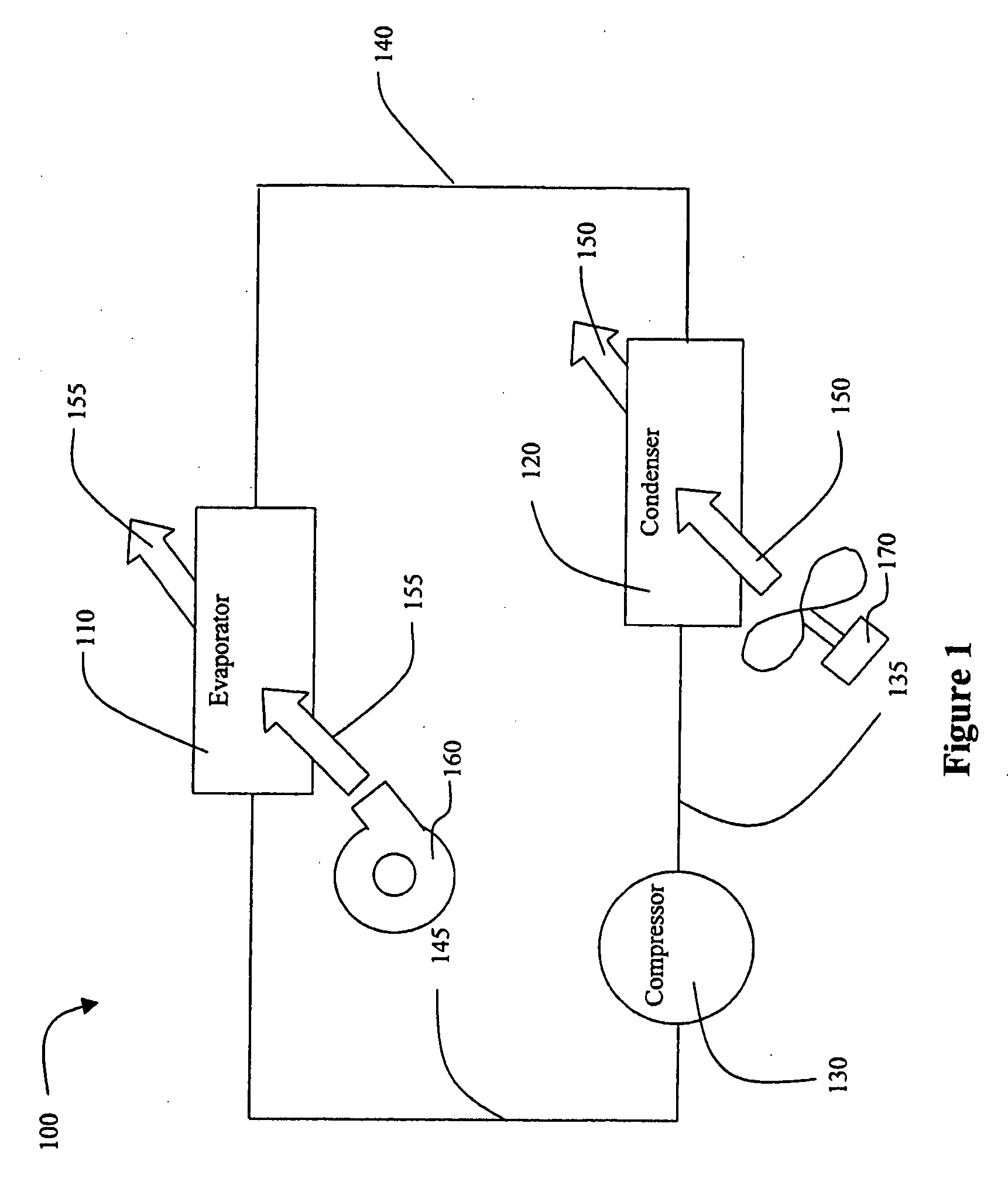Method and system for dehumidification and refrigerant pressure control
a technology of refrigerant pressure and dehumidification, which is applied in the field of heating, ventilation and air conditioner systems, can solve the problems of overcooling, overcooling is a particular problem, and overcooling is a common term, so as to reduce the system pressure, control the head pressure, and avoid the icing of the system components
- Summary
- Abstract
- Description
- Claims
- Application Information
AI Technical Summary
Benefits of technology
Problems solved by technology
Method used
Image
Examples
Embodiment Construction
[0036]FIG. 1 illustrates a HVAC, refrigeration, or chiller system 100. Refrigeration system 100 includes a compressor 130, a condenser 120, and an evaporator 110. The compressor 130 compresses a refrigerant vapor and delivers it to the condenser 120 through compressor discharge line 135. The compressor 130 is preferably a reciprocating or scroll compressor, however, any other suitable type of compressor can be used, for example, screw compressor, rotary compressor, and centrifugal compressor. The refrigerant vapor delivered by the compressor 130 to the condenser 120 enters into a heat exchange relationship with a first heat transfer fluid 150, preferably air, and undergoes a phase change to a refrigerant liquid as a result of the heat exchange relationship with the first heat transfer fluid 150. The first heat transfer fluid 150 is moved by use of a fan 170, which moves the first heat transfer fluid 150 through the condenser 120 in a direction perpendicular the cross section of the ...
PUM
 Login to View More
Login to View More Abstract
Description
Claims
Application Information
 Login to View More
Login to View More - R&D
- Intellectual Property
- Life Sciences
- Materials
- Tech Scout
- Unparalleled Data Quality
- Higher Quality Content
- 60% Fewer Hallucinations
Browse by: Latest US Patents, China's latest patents, Technical Efficacy Thesaurus, Application Domain, Technology Topic, Popular Technical Reports.
© 2025 PatSnap. All rights reserved.Legal|Privacy policy|Modern Slavery Act Transparency Statement|Sitemap|About US| Contact US: help@patsnap.com



